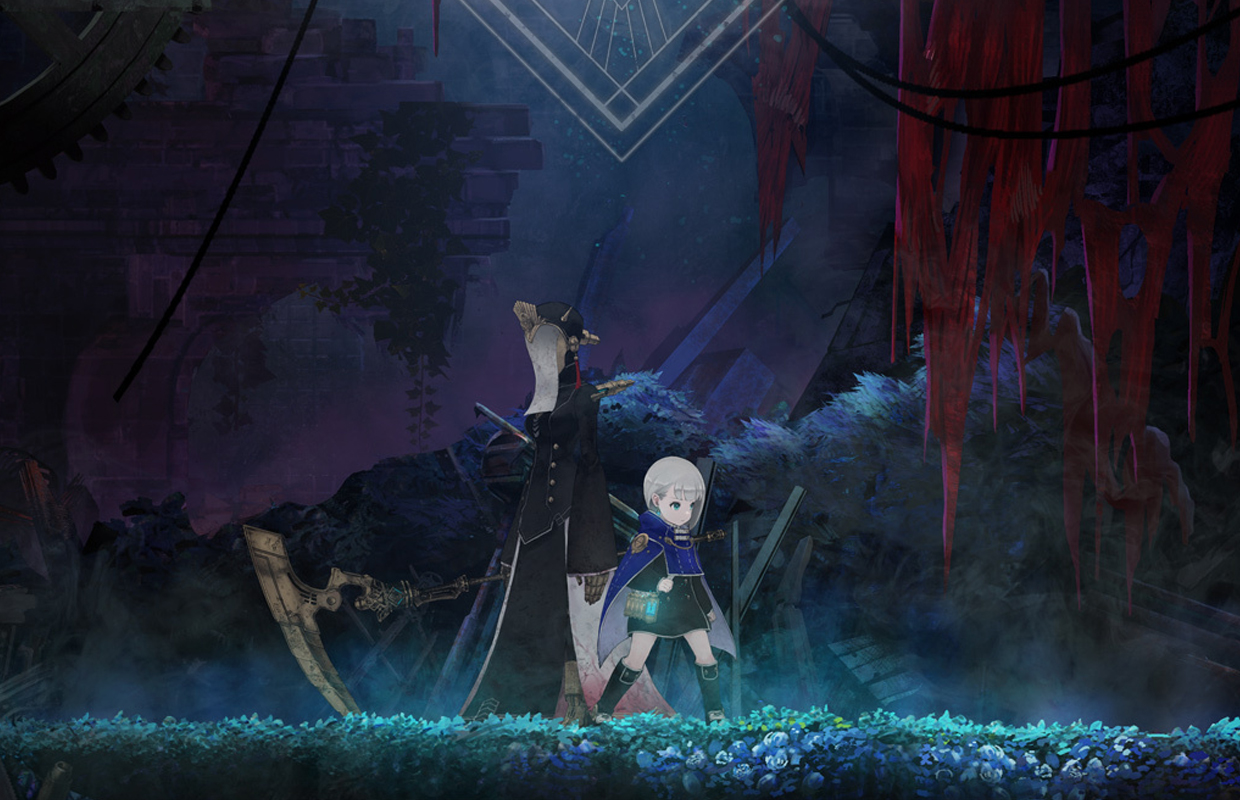
Have you ever encountered a situation where a game leaves you puzzled or frustrated by its rules or plot, only to be captivated by an enchanting melody that makes you momentarily forget your initial reservations? For me, games like NieR: Automata have evoked this feeling. However, it’s been a while since I found myself simply immersed in the ambiance of a game. The Metroidvania game, ENDER MAGNOLIA: Bloom in the Mist, was one such experience for me.
Although I’m not a fan of the term “Metroidvania,” the developers Binary Haze Interactive refer to their game as such, and they use it on their marketing materials and Steam page. Essentially, this game is an anime-style Metroidvania, but unlike any I’ve played before. Since I haven’t had a chance to play the original _Ender Lilies_, rest assured that _Magnolia_ is set supposedly thousands of years after it, so you won’t need to have prior knowledge or experience with it.
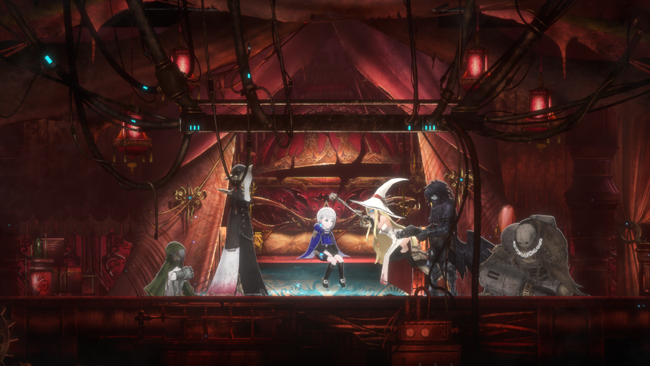
Initially, it’s likely you’ll find that the game’s movement isn’t particularly smooth. You’ll only have a jump and a dash to work with for about the first quarter of the game. However, as you progress, you’ll uncover more refined movement techniques. In my opinion, some of these abilities should have been made available earlier in the game. Around halfway through (approximately in the Steel District), everything seems to fall into place, and you’ll find yourself nimbly navigating maps, weaving through puzzles, and dodging enemies.
As a fan, I’d say the game’s difficulty is moderately challenging with a hint of being on the easier side. The boss battles are generally straightforward, except for a handful of late-game and optional ones, like the Witch who gave me quite the puzzle for around an hour. The enemies you encounter throughout your journey offer a unique and diverse set of challenges, with some basic foes packing quite the punch (and trust me, you’ll soon learn to respect even the lowly rats!).
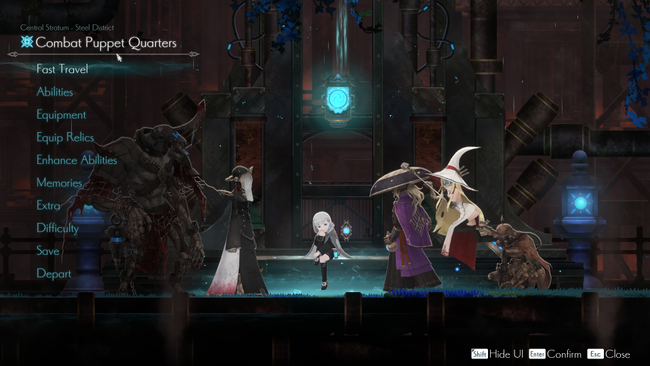
What truly captivates me about the game isn’t its challenge level or advanced search-action technology, even though I can’t wait to see how speedrunners tackle it. Instead, what draws me in is the enchanting ambiance that each area radiates. Stunning landscapes, seamless animations, and a melancholic musical score resonate deeply within every location. Remarkably, the starting area seems less captivating, yet every subsequent area strikes the perfect note. The Old City and the Steel District, in particular, are my preferred spots to simply sit and soak in the sounds.
The music has multiple levels, with most tracks having a gentle tone. However, at save points (Respites), the song becomes more melodic by removing or reducing vocals, bass, and drums. As soon as you leave a Respite, the vocals, bass, and drums resume to signal that you’re venturing into risky areas once more.
In this game, the Igavania series’ characteristic elements are prominently featured. Alongside discovering new Homunculi, which serve both as your weapons and means of movement, you also come across a variety of items to equip: Carapaces, offering stat boosts or counterattack options; Relics, providing diverse advantages for creating unique build strategies; Bracelets, granting stat bonuses; and Totems, bestowing passive benefits to your healing reserves. Additionally, your character’s level increases consistently throughout the game, although it’s unclear how much this affects your overall power. Nevertheless, the progression felt natural, maintaining a balanced experience that rarely made me feel overwhelmed while exploring.
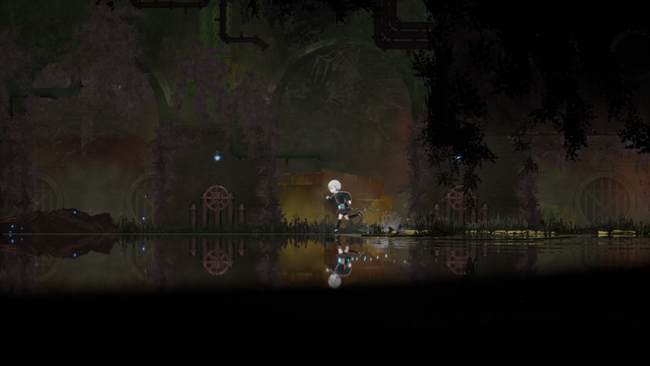
You’ll observe that I haven’t delved deeply into the story, and there are a few explanations for this: firstly, spoilers can ruin the experience, but also the game delivers its story in a gradual manner through item descriptions, collectables, and occasional cutscenes, which can be quite slow. However, the game compensates for this by managing smaller story interactions exceptionally well. At each new Respite, you have the opportunity to engage with your Homunculi, gaining insights into their relationships, thoughts about the current objective, or reflections on their past lives. Over time, these interactions accumulate and help you understand the major narrative events better when they occur.
The game clearly emphasizes a rigid social structure where the Upper Stratum rules over the Lower with an iron fist. It’s evident that the Old City in the Lower Stratum serves as a burial ground for society’s outcasts, condemned by the privileged few above. A disease called the Blight ravages the mines and subterranean passages, inducing madness among those exposed to its toxic fumes. Unfortunately, even the middle class isn’t spared, as their institutions are being dismantled to cater to the caprices of a select group of wealthy, influential men, who use them for scientific experiments and bloodthirsty entertainment.
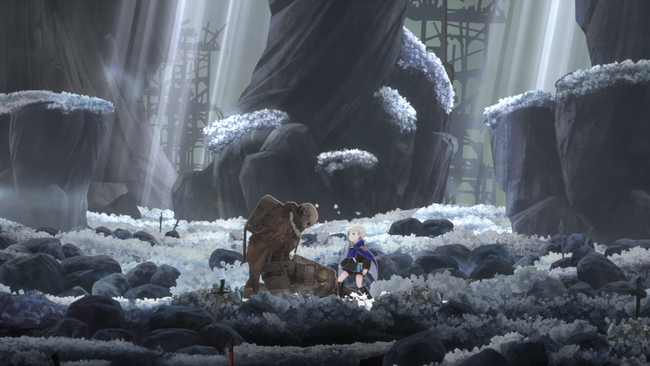
As much as I adore this game and appreciate its many strengths, there are a few hiccups that I feel compel me to address from my perspective as a fan. For instance, some adversaries could’ve benefited from a tweak to their balance – the rats, for example, seem overly aggressive in their attacks, hitting too hard and fast according to my personal opinion. Additionally, certain areas, like the Crimson Forest in particular, can be quite cumbersome to traverse during the early stages when you’re still acquiring your navigation tools. This forest is expansive with a significant amount of verticality, which is already challenging, but it’s made even more difficult by one-way portals that confuse the path forward. To make matters worse, these portals don’t provide any clear indication on the map as to where they lead, leaving you to guess and potentially backtrack due to missteps.
For a couple of days there, the Crimson Forest in this game almost turned me off completely. But once I pushed through and moved on, let me tell you, the rest of the game was pure joy! The Steel District swept me away so much that I even forgot about how challenging the Crimson Forest seemed initially. Going back to gather some leftover collectibles felt like a breeze now that I had all my movement abilities at my disposal.
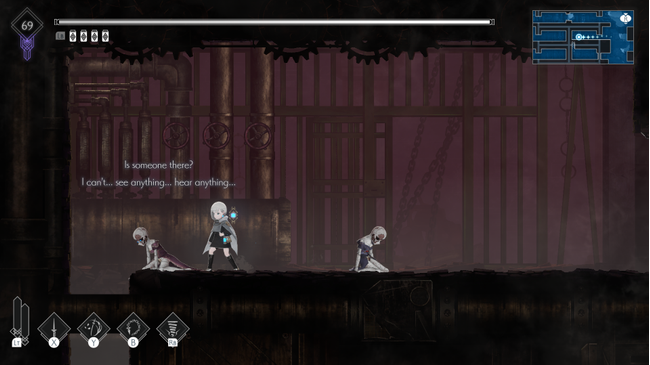
To put it simply, I’m head over heels for this game. It’s like a double jab to the heartstrings with its moving soundtracks and stunning visuals, coupled with engaging search-and-action gameplay and intriguing progression. In essence, Ender Magnolia is an obvious choice for any gaming enthusiast. For a completionist aiming for all achievements, the playtime clocks in at around 17 hours, making it perfect for a weekend gaming session.
Ender Magnolia: Flourish Among the Fog” can currently be found on Steam, offering a complimentary demo as well. Look forward to its arrival on Nintendo Switch, PlayStation, and Xbox platforms in the coming days.
9
Versions tested: Steam/PC
Read More
- FARTCOIN PREDICTION. FARTCOIN cryptocurrency
- Mastering the Tram Station: Your Guide to Making Foolproof Jumps in Abiotic Factor
- Skull and Bones: Players Demand Nerf for the Overpowered Garuda Ship
- Gaming News: Rocksteady Faces Layoffs After Suicide Squad Game Backlash
- League of Legends: The Mythmaker Jhin Skin – A Good Start or a Disappointing Trend?
- SUI PREDICTION. SUI cryptocurrency
- ‘The Batman 2’ Delayed to 2027, Alejandro G. Iñarritu’s Tom Cruise Movie Gets 2026 Date
- Smite: Is the Current God TTK Too High? The Community Weighs In!
- What’s Ikora Hiding in Destiny 2? Players Share Their Thoughts!
- Honkai: Star Rail Matchmaking Shenanigans and Epic Hand-Holding Moments!
2025-01-21 19:56